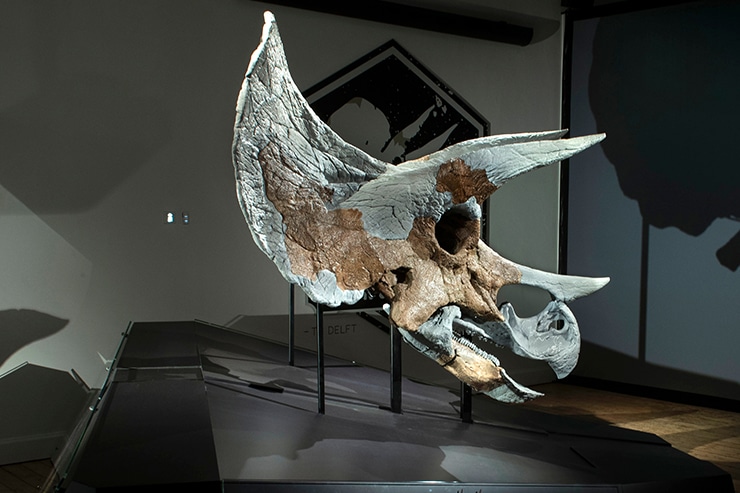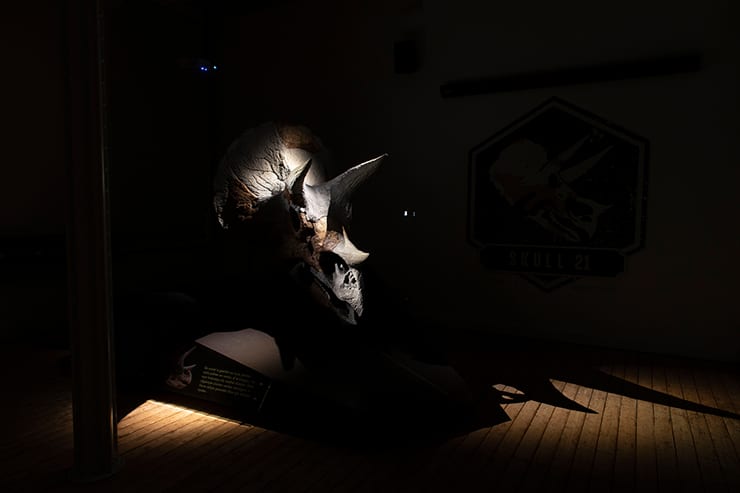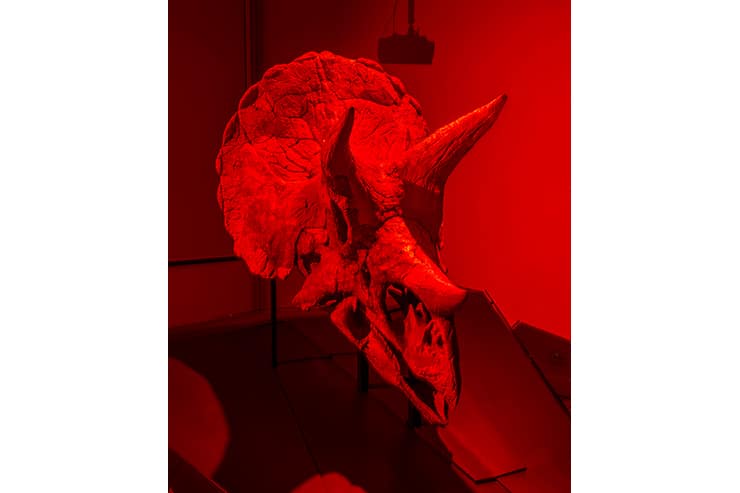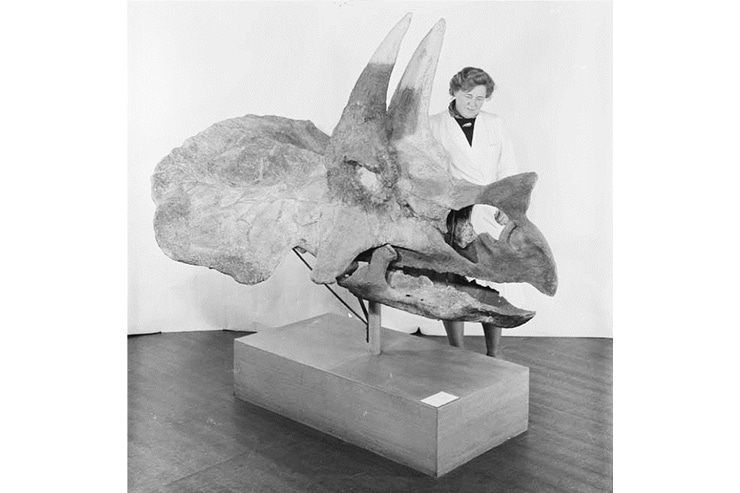This website uses cookies so that we can provide you with the best user experience possible. Cookie information is stored in your browser and performs functions such as recognising you when you return to our website and helping our team to understand which sections of the website you find most interesting and useful.
Skull 21, Netherlands
ProjectSkull 21LocationDelft, NetherlandsLighting DesignFraai Werk, NetherlandsInterior DesignHugo Out, NetherlandsAdditional DesignDynamic Light Lab, Delft University of Technology, Girish Malage, Xinyu Huang (Lighting design concept); Perceptual Intelligence Lab, Delft University of Technology (Research)Client Delft Science Centre Lighting SuppliersLedmotive, Concord
Introduction
Picture this: a group of triceratops dinosaurs died roughly 66 million years ago. They were excavated in the early 20th century, and one incomplete skull ended up in Delft, The Netherlands. Since it was heavily damaged during its boat transport to Europe in 1956, dr. Pieter Kruizinga reconstructed it by hand, based on very limited sources. Recent insights made clear that the triceratops skull must have looked different though. Several sponsors enabled a scientific, advanced technological restoration of this valuable piece of prehistory. Here we present the storytelling lighting scenario for its exhibition, designed in collaboration of the Science Center of TUDelft with students, scientists and industry.
Science and technology
High resolution 3D optical scanning techniques were used to model two smaller but quite complete triceratops skulls in Yale and München. These were used to re-model the Delft skull, re-fit the real bone parts in the model, and 3d print the missing parts. The novel model deviates from the old restoration, in the shape and dimensions of horns, nose and shield. This scientific high-tech process is highly innovative in the field of paleontology. Distinguishing ‘Skull 21’ from other historical museums, the reconstructed parts were not retouched, showing what are real bones and what are 3D printed parts, and the science and technology behind it.
Storytelling
The Science Centre ‘Skull 21’ exhibition is designed as a guided storytelling tour, educating visitors about the backgrounds and reconstruction technologies, from its discovery up to the end result. It is built up in a sequence of scenes, in which lighting effects support the storytelling. First the skull’s shadow rises from the dark as a dramatic, 3 meters high moving shadow of the still invisible skull, back projected on an enormous translucent screen. This scene is then merged with a video explaining historical facts. Next, turning the corner the skull’s shape and size can be seen but not yet the differences between the bone and 3D printed parts! To this aim we used novel advanced spectral tuning technologies (see below). The following scene almost magically unveils the colour and texture differences between the brownish bone and grey plastic 3D printed parts using pinspots. The story continues with explanations of the scanning, modelling and printing supported by stroboscopic, laser and video projections on the skull and front-screen.
Spectral tuning, a new era of LED technology
Spectral tuning is being applied commercially to make certain colours stand out and trigger preferences (f.i. the red sweetness of strawberries, or blueish freshness of fish). Making two different materials look the same (or maximally different) forms a novel scientific and technological tuning challenge. Using spectrophotometry, mathematical modelling and spectrally tunable LEDs we succeeded to design LED spots that made the bone-print-differences invisible – while salient under white light! As part of a story, the remains of a prehistorical piece meet a 21st century marvel. While dimming and colour temperature adjustments are common in lighting design, this demonstrates a whole new world of possibilities.






